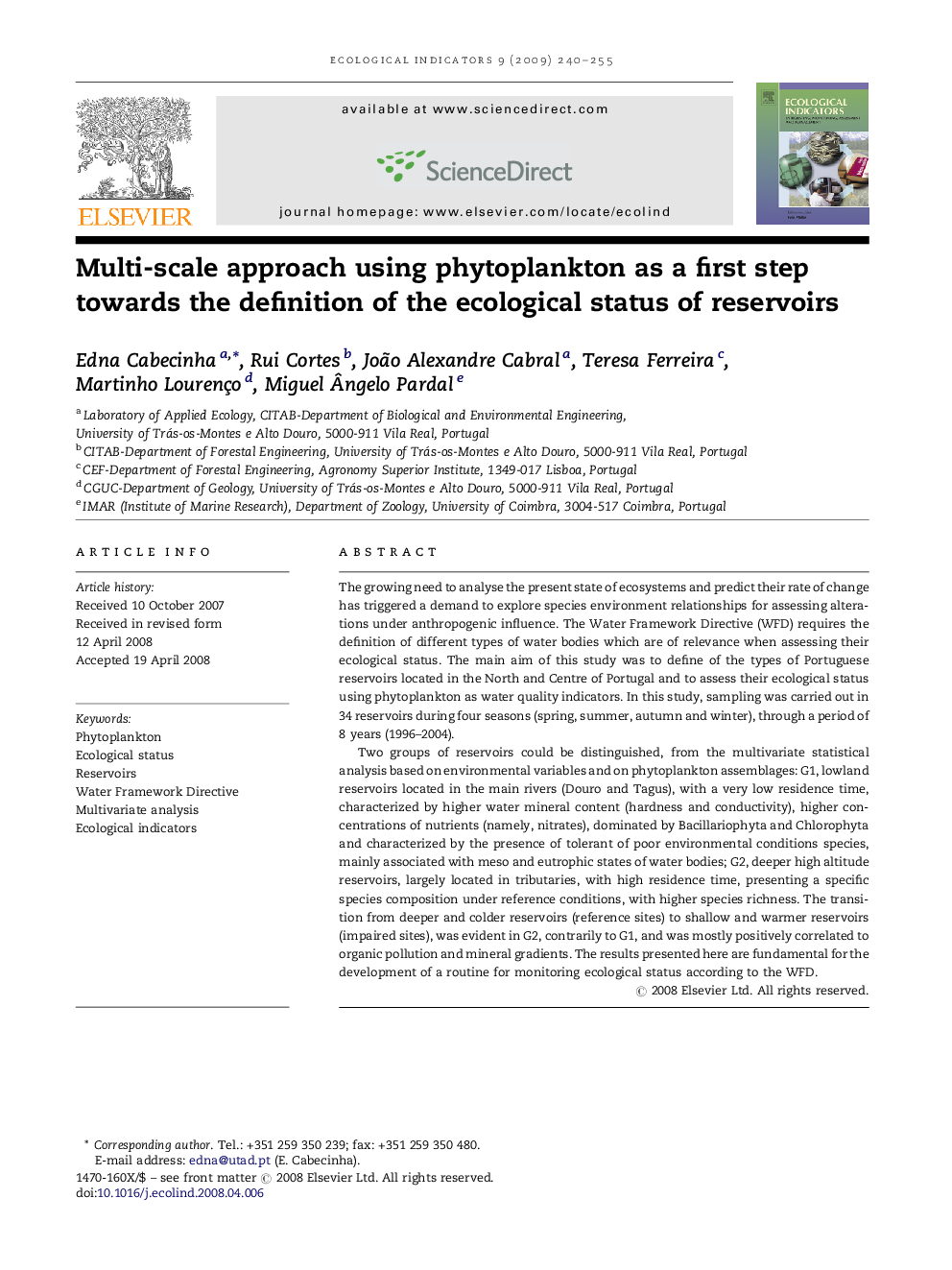| Article ID | Journal | Published Year | Pages | File Type |
|---|---|---|---|---|
| 4374445 | Ecological Indicators | 2009 | 16 Pages |
Abstract
Two groups of reservoirs could be distinguished, from the multivariate statistical analysis based on environmental variables and on phytoplankton assemblages: G1, lowland reservoirs located in the main rivers (Douro and Tagus), with a very low residence time, characterized by higher water mineral content (hardness and conductivity), higher concentrations of nutrients (namely, nitrates), dominated by Bacillariophyta and Chlorophyta and characterized by the presence of tolerant of poor environmental conditions species, mainly associated with meso and eutrophic states of water bodies; G2, deeper high altitude reservoirs, largely located in tributaries, with high residence time, presenting a specific species composition under reference conditions, with higher species richness. The transition from deeper and colder reservoirs (reference sites) to shallow and warmer reservoirs (impaired sites), was evident in G2, contrarily to G1, and was mostly positively correlated to organic pollution and mineral gradients. The results presented here are fundamental for the development of a routine for monitoring ecological status according to the WFD.
Keywords
Related Topics
Life Sciences
Agricultural and Biological Sciences
Ecology, Evolution, Behavior and Systematics
Authors
Edna Cabecinha, Rui Cortes, João Alexandre Cabral, Teresa Ferreira, Martinho Lourenço, Miguel Ãngelo Pardal,
